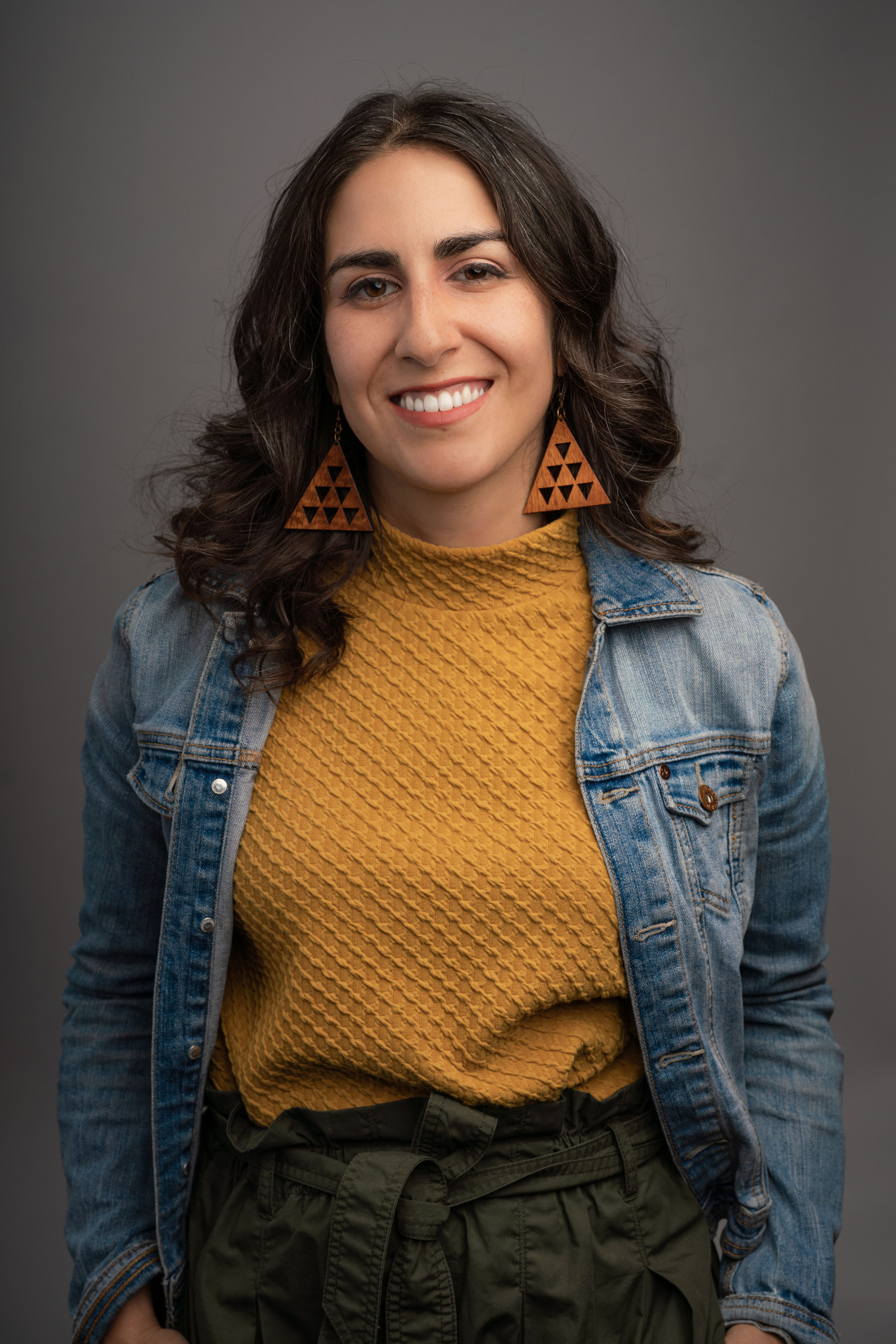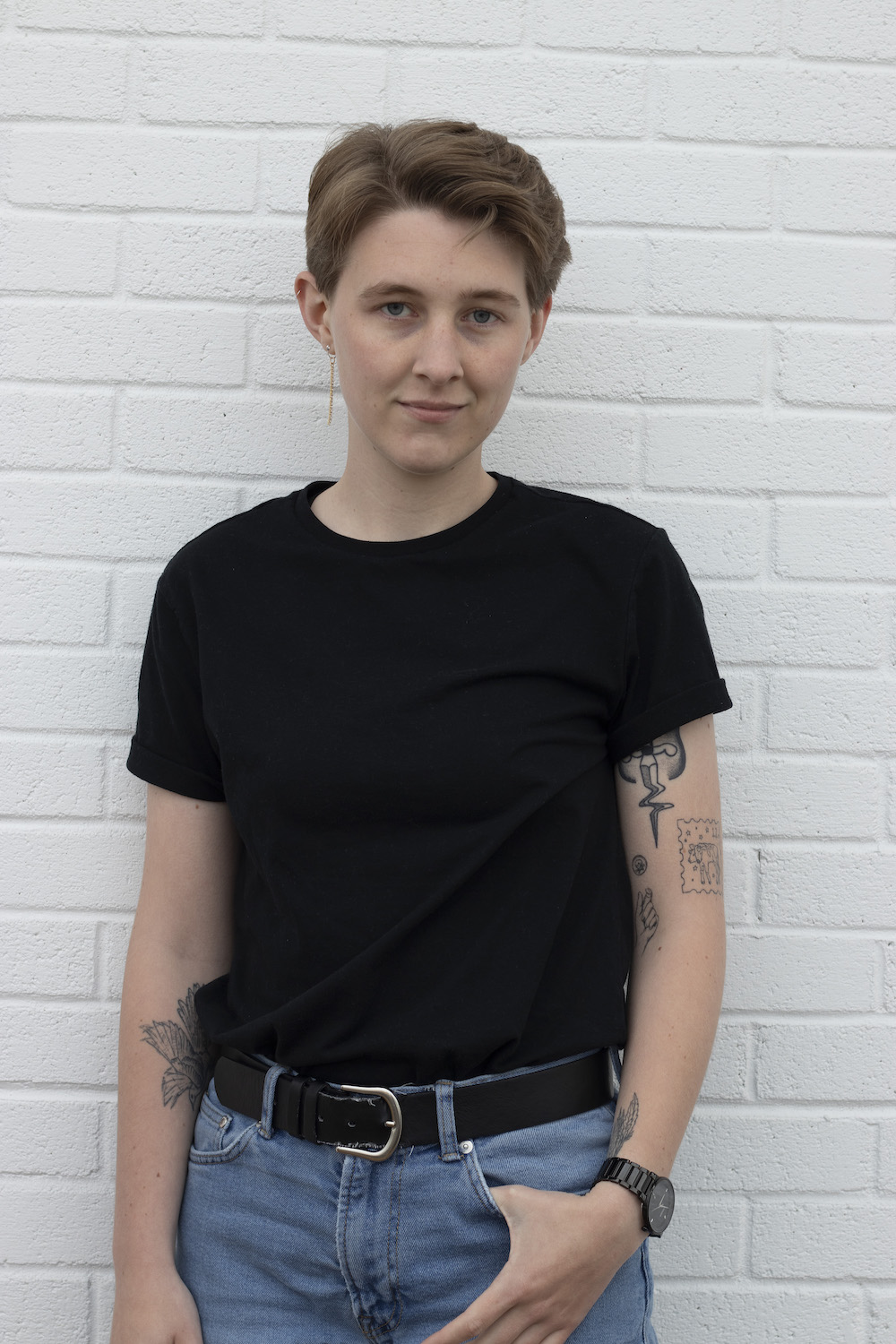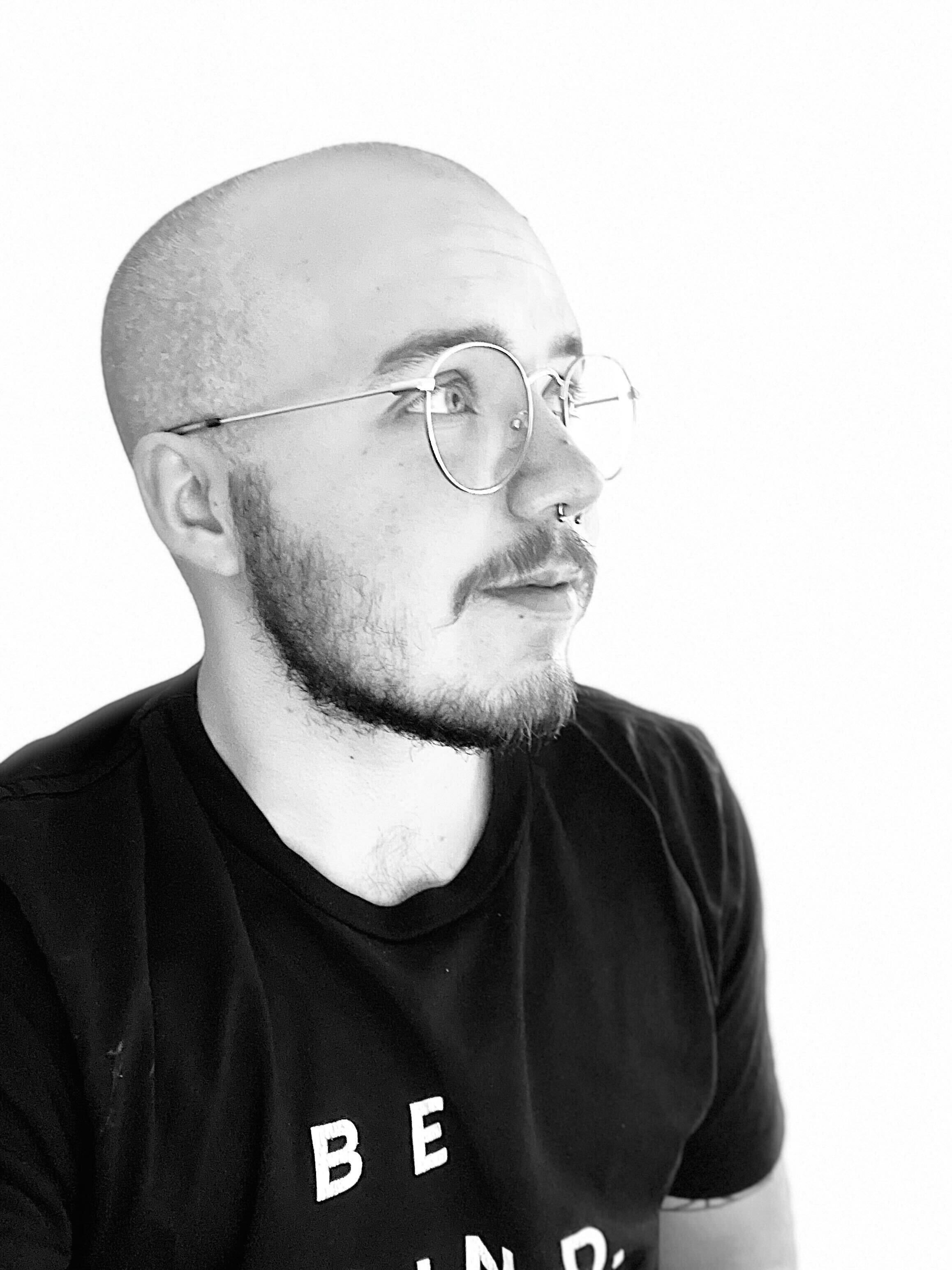Do you need B-roll? The honest answer depends on what you're creating. A YouTube chat show? Probably not. A TikTok storytime? Also no. But when you're explaining complex concepts, ideas, or histories, B-roll becomes your secret weapon. Even with a simple vlog, a few well-placed B-roll shots can transform mediocre footage into something that looks deliberately professional, breaking up the visual monotony with footage that actually supports your story.
B-roll footage is the silent workhorse of video production — it adds layers to your story without stealing the spotlight. It's not just filler; it's the visual evidence that backs up what you're saying and keeps viewers engaged when your talking head starts to wear thin.
Nobody wants to stare at the same frame for five minutes straight. B-roll gives your audience visual variety while reinforcing your message, and the best part? It doesn't require doubling your production time or budget.
This guide breaks down the different types of B-roll, when to use each one, and how to incorporate them like someone who knows what they're doing—even if you're figuring it out as you go.
What is B-roll footage?
B-roll footage, also known as a B-reel, describes supplementary footage that isn't the main action in modern film and video production. This secondary footage is intercut with the main shots (A-roll) in a video or film, and doesn't include the main subject. The term originated from traditional film editing, where editors would use the 'A roll' for primary footage and the 'B roll' for supplementary shots.
The type of B-roll footage used often depends on the subject and intended mood of the piece. Each type of B-roll can add a unique layer to the storytelling, from establishing shots and cutaways to insert shots and transitional footage.
Think about a few B-roll examples, including: establishing shots that set the scene, cutaway shots that provide context, close-up insert shots that highlight details, and transition shots that help move the story forward.
- Scenic shots: Landscapes, cityscapes, and nature footage at different camera angles that capture the broader setting.
- Atmospheric or ambiance shots: Scenes of crowds, traffic, or weather events that help convey mood or environment.
- Cutaway shots: Objects or actions indirectly related to the main scene, offering thematic connections.
- Inserts: Close-up views of specific details within scenes, such as a hand grabbing a mug.
- Reaction shots: Shows people's responses to main events, capturing emotions like surprise or joy.
- Time-lapses: Events that unfold over a longer duration shown in speedy sequences, like flowers blooming.
- Slow motion: Footage slowed down to emphasize and highlight specific actions or moments.
- Texture shots: Close-ups showcasing intricate textures or patterns, adding an extra layer of visual appeal.
- Establishing shots: Broad views that set the scene, like the exterior of a location before an indoor event.
- Drone footage: Captivating aerial shots providing expansive and often breathtaking perspectives.
A closer look at B-roll's film editing roots
While many modern creators associate B-roll with digital editing, its origins trace back to physical film workflows in 16 mm and 35 mm formats. In those early days, editors literally worked with separate reels for primary and supplementary footage, labeling them as A-roll and B-roll. According to historical references, this approach allowed them to seamlessly integrate extra scenes without refilming entire sequences. Even as the industry transitioned to non-linear systems, the term B-roll endured thanks to its distinct editorial purpose. Today, the essence remains the same: B-roll enriches the main narrative by adding contextual or visually compelling support.
The evolution of B-roll footage
Before the pandemic, a 30-minute-long talking head video was generally considered a complete and engaging video on YouTube. Simple, straightforward edits were common.
If there were any B-roll, it'd be something like the creator telling the camera, "And then we went to the store," followed by secondary footage.
But since 2020-2023 (the pandemic era), creators on TikTok, Instagram, and YouTube are skipping the interview layer, or "A-roll," in favor of captions and voiceovers. It's common for the interview subject to even be green-screened on top of the B-roll footage itself.
Today, a talking-head interview might take up a small portion of the video. This TikTok video from Nas Daily, for example, shows the creator talking about climate change at the start of the video. B-roll footage of melting ice caps and behind-the-scenes footage:
What's the difference between A-roll and B-roll footage?
In filmmaking, understanding the distinction between A-roll and B-roll is crucial.
A-roll is the primary footage. It contains the main narrative or the backbone of your story. Think of interviews, main dialogue scenes, and key moments that drive the narrative forward. A-roll would be the main chapters if your video were a book.
Unlike primary footage or A-roll—which usually contains the main narrative, interviews, or key scenes—B-roll footage adds depth and context, and prevents monotony. It enriches the story and provides a visual break from the main video content, helping to maintain viewer engagement throughout longer videos.
B-roll footage can include everything from scenic shots setting a location's ambiance to close-up inserts emphasizing details. In scripted productions, B-roll includes cutaways, establishing shots, inserts, and other shots that help transition between scenes or provide context. While A-roll tells the primary story, B-roll enriches it, making the piece more engaging and visually compelling.
Advanced camera techniques for B-roll
Shooting memorable B-roll often begins with leveraging different camera angles, like high-angle views for broader context and low-angle shots for added drama. Smooth motion is also key, and using sliders or gimbals can help achieve stable tracking shots. Industry best practices recommend capturing each clip for at least three to five seconds, providing essential flexibility during editing [source]. Longer takes, such as ten seconds or more, may fit slower-paced narratives or documentary-style storytelling. By experimenting with varied framing and movement styles, creators can instantly elevate the production value of their B-roll.
How to shoot B-roll footage
Creating captivating B-roll footage is a big part of the video content creation process. Proper pre-production, including storyboarding, can help transform a simple video into a masterpiece of visual storytelling.
Here's how you can master the art of capturing B-roll footage:
- Plan and prepare
- Find compelling shots
- Maintain technical quality
- Capture ample footage and coverage
1. Plan and prepare
Video pre-production is more than just pricing and logistics. Before hitting the record button, dive deep into planning. Understand the narrative you want to convey through visual storytelling, and create a shot list of the specific B-roll footage you'll need to capture.
For instance, if your feature film revolves around a bakery, storyboard sequences capturing the main ingredients, followed by freshly baked bread, its shimmering golden crust, or even the steam rising from a freshly baked loaf.
With tools like Descript, you can edit your planned shots like a Word document. Here's a quick rundown of how easy it can be to organize your B-roll shots:
Edit videos like a document | Uncover the hidden features of script editing
2. Find compelling shots
The essence of B-roll footage lies in securing captivating visuals. Consider capturing different shots that visually tell the core of your narrative or context. Experiment with wide shots, medium shots, and close-ups of the same subject to create a diverse selection of B-roll footage.
For example, in a documentary about a bustling city, A-roll might focus on interviews. The B-roll video can pan through the rush of morning traffic, the tranquility of a park, or the city's vibrant nightlife—each giving added context and visual interest.
3. Maintain technical quality
While B-roll introduces flavor to your video content, it should still be high-quality. Achieve stable shots, sharp focus, and proper exposure. The production process, enhanced with tools like tripods or gimbals, can significantly elevate your footage quality.
Say you're filming a mountain scene. A shaky hand-held capture would be off-putting. Panning the scene with a tripod offers stability, allowing the audience to fully appreciate the landscape without distractions.
4. Capture ample footage and coverage
When shooting B-roll footage, more is often better. Collecting alternative footage from different angles and distances provides editing flexibility.
The broader your shot list range, the more choices you'll have during post-production. For example, in a coffee shop setting, aim for close-ups of dripping coffee, wide shots showcasing the ambiance, and medium shots of baristas in action. This ensures you have a list of varied shots to work with during video editing. Try different angles, heights, and camera movements to create a diverse selection of B-roll footage.
Remember: B-roll should complement and elevate your primary A-roll. With your audience's viewpoint at the forefront, your goal should be to craft visuals that add life and context to your narrative.
Vlogger Steven Bartlett takes this approach when talking about a recent event in his YouTube series Behind the Diary:
 |
Uses of B-roll footage
B-roll footage plays a critical role in video production. It adds depth, style, and context to your main footage. Let's explore the most common uses of B-roll.
Context and setting
B-roll footage helps set the stage by giving viewers a sense of place or time. It offers background details that help frame the primary story. In a documentary about a historic site, while the main footage might focus on an expert discussing its significance, B-roll can show different angles, panoramic views of the site, or close-ups of relics. These establishing shots create context for the viewer.
Visual interest and engagement
Watching talking heads for too long gets boring fast. B-roll breaks up potentially boring footage by keeping viewers engaged with extra visuals that contribute to the narrative.
In a biographical piece about an artist, while they talk about their passion for painting, use B-roll footage that shows their hands mixing paint, the intense focus in their eyes, or their brush strokes coming to life on canvas. This type of illustrative B-roll helps viewers visualize what's being described in the A-roll.
On the Love and London YouTube channel, for example, video editors merge interview-style video content with B-roll footage of London's Chinatown:
 |
Seamless transitions
B-roll is an excellent tool for bridging gaps between scenes or segments, which improves the flow of your video. These smooth transitions connect disparate parts of a video and guide the viewer from one point to the next.
While talking about travel, the B-roll footage of a train journey or a plane in the sky can serve as a visual metaphor for movement and change. These transition shots should be 3-5 seconds long to give viewers enough time to process the visual without becoming tedious.
Covering voiceovers or interviews
There are often segments in a video where the audio carries the narrative—be it voiceovers or off-camera interviews. B-roll provides relevant visuals that support and illustrate what's being said, making the story more comprehensive.
To illustrate, as a farmer speaks off-camera about the benefits of organic practices, B-roll footage can show lush fields, healthy animals, and close-ups of fresh produce, visually reinforcing the farmer's words. In documentary filmmaking, this type of B-roll might include shots that establish the location, show what interview subjects are describing, or capture context.
Perfecting your B-roll footage
B-roll is more than just "extra footage." It's a powerful tool that contributes to better storytelling, making your videos more immersive and engaging.
Alison Grasso, a freelance documentary and commercial editor, says that B-roll is where an editor's artistry can really shine: “You could just put a bunch of shots together and it might work, but if you really want to hone your craft, that's where I get obsessed—how is the shot ending? How is the next shot beginning?”
“If someone were to ask “why did you make this cut?” or “why did you pick this shot?” you should have an answer.”
—Alison Grasso, freelance video editor
Rather than just slapping a bunch of shots together, really think about your B-roll footage as its own story, just like the interview that might be lying beneath it. If your subject is talking about trees, you could start with a wide, establishing shot of trees, then go to macro shots of the detail of a tree while we get more information. When shooting B-roll, slow down - too much camera movement can be distracting and make your footage difficult to use.
As your story transitions away from trees, a drone or motion shot moving away from trees could be a big help. You can treat the B-roll like its own sequence, all while supporting the interview or voiceover below it.
Tiff Bauer,a former Descript video producer, used to work on many documentary-style corporate videos. B-roll was something she relied on to help elevate them. “I remember the feeling of the first time I cohesively put together a well-shot interview with some really nice B-roll and music and I finally felt like editing was clicking in my brain,” she says. “I watched it back and didn't feel like I was watching my work. It was kind of surreal how it all just fell into place.”
One of the best ways to learn a craft is to seek out the people who do it well. Here are four creators who produced incredible videos with B-roll footage:
- Daniel Schiffer: “He's the YouTube king of product videos and product B-roll,” Tiff says. “It's mostly food focused, but it's a really great source of inspiration if you want to shoot some super interesting B-roll.”
- Bryce McNabb: “This video gives a great breakdown on how to shoot 'scenes' of B-roll, the six types of B-roll shots needed,” Tiff says. “You could probably use this ideology when picking stock footage that you use as B-roll too!”
- That Camera Girl: “This goes over a bunch of good places to find stock B-roll for people who don't want to shoot or don't have the capabilities of shooting their own B-roll!” Tiff says.
- Joey Helms: This short film was shot entirely on an iPhone. “This is awesome because it shows that it's not necessarily about using the most expensive gear to get great looking b-roll, just be creative!”
Create better B-roll footage with Descript
The tools you choose to create B-roll footage can make all the difference. Enter Descript, a video editor tailored to meet your editing needs without friction. With Descript's Stock panel, you can also access a creative set of visual content including stock videos perfect for B-roll when you don't have time to shoot your own footage.
Intuitive and user-friendly, Descript's all-in-one video editor makes it easy to create stunning videos. Upload a video file, and Descript will transcribe the spoken content. You can then edit the multimedia file by editing the transcript text.
B-roll footage FAQs
What is an example of B-roll footage?
Say you're watching a documentary about a famous author. While the primary footage (A-roll) might consist of her interview, the B-roll footage would include shots of her typing away on her typewriter, close-ups of her handwritten notes, or visuals of the friends she mentions in her stories. These shots provide context, set the mood, and make the documentary visually richer. A good ratio is often 60% A-roll to 40% B-roll footage in documentary-style videos.
How does B-roll footage work?
B-roll footage works with the main footage to enhance the storytelling process. Videographers can provide varied visuals to break up potentially boring footage, add depth, and offer viewers a more comprehensive understanding of the topic. In scripted video productions, B-roll includes cutaways, establishing shots, inserts, and other shots that help transition between scenes or provide context.
What are B-roll footage and C-roll?
B-roll footage is the supplementary footage, while C-roll refers to additional footage that might not be as essential. C-roll can be used for extended coverage, bonus material, or outtakes. Unlike raw footage which is unedited material straight from the camera, B-roll is typically selected and edited specifically to complement the A-roll.
How long should a B-roll clip be?
In general, a B-roll clip should last around three to five seconds to allow enough footage for flexible editing. Some projects, like slow-paced documentaries, may benefit from shots running ten seconds or longer [source]. Ultimately, clip length depends on pacing, story needs, and the desired viewing experience.
Where can you find stock B-roll footage for free?
You can browse platforms like Pexels and Pixabay for free B-roll options. Many free sites offer watermarked clips, so verify usage rights before finalizing your choice. Paid services like Shutterstock and Pond5 also provide 4K and HD licensing options for premium footage. Matching color grading between stock and original footage helps maintain visual consistency.









































